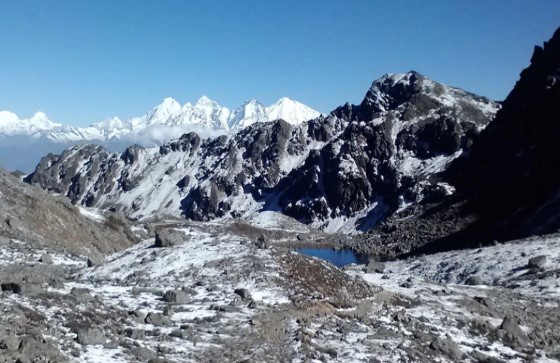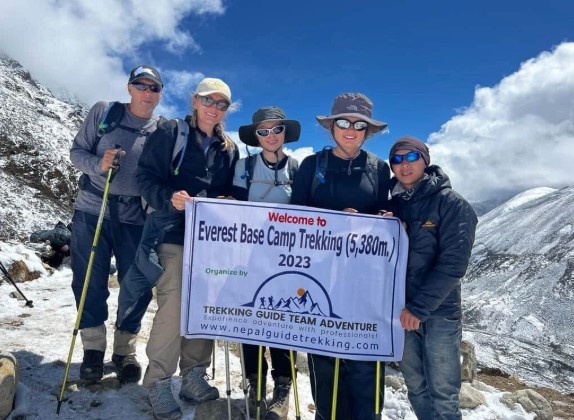Nepal, a arrival of towering monsters and supernatural trails, has long been a trek location for trekkers looking for both experience and otherworldly quietness. Among its numerous amazing Routes, four treks stand out—Everest Base Camp trek, Langtang-Ganja La Pass Trekking (14 Days), Pikey peak trek, and the Annapurna Circuit trek (16 Days). These trails shift in concentrated, view, and social submersion, advertising a well-rounded encounter of what Nepal really represents—from snow-capped Himalayan peaks to profound valleys improved with antiquated conventions. In this article, we jump into why these treks are a must-do, their exciting Routes and highlights, the best time to go, the neighborhood societies you’ll encounter, settlement and nourishment accessibility, basic pressing counsel, and a last word for experience seekers.
Langtang Ganja La Pass Trekking – 14 Days
The Langtang Ganja La Pass Trekking (14 Days) is a covered up diamond advertising both magnificence and isolation. Beginning from Syabrubesi, this path leads trekkers into the Langtang Valley, renowned worldwide for its sensational mountain vistas and wealthy Tamang culture. As you slowly rise through rich woodlands, yak pastures, and elevated knolls, the travel crescendos with the crossing of the impressive Ganja La Pass (5,122 m). This is a challenging high-altitude Route that requests involvement and wellness but rewards you with crude, untouched Himalayan scenes that few ever see. The trek concludes at Melamchi Pul Bazar, advertising a one of a kind circular path that feels like a genuine expedition.
Everest Base Camp Trekking
Everest Base Camp trekking is the extreme Himalayan trek. Strolling in the strides of incredible mountain climbers, trekkers reach the foot of the world’s most noteworthy mountain__Mount Everest (8,848.86 m.). Beginning from Lukla, the path winds through Sherpa towns like Namche Bazaar and Tengboche, with breathtaking views of Everest., Lhotse, Ama Dablam, and Nuptse. This trek is as much the otherworldly involvement as the physical challenge, taking you to famous areas like Kala Patthar for an all encompassing Everest dawn and Everest Base Camp (5,364 m.) itself. The trek is physically requesting due to elevation but available for those in great wellbeing and spirit.
Pikey peak Trekking
For those looking for a shorter, off-the-beaten-path enterprise, Pikey peak Trekking is a great choice. This five to seven-day trek in the lower Everest region is known for one of the best dawn sees of Everest. Beginning from Dhap or Jiri, the path winds through serene towns, timberlands of rhododendrons, and pastures dabbed with yak covers. Pikey peak (4,065 m) offers a vantage point where you can witness the whole Himalayan range—from Dhaulagiri to Everest—glowing in brilliant light. This lesser-known path is perfect for travelers looking for isolation, social inundation, and available elevations with staggering rewards.
Annapurna Circuit trek – 16 Days
One of the most popular trekking Routes in the world, the Annapurna Circuit trek (16 Days) offers the most different scene and social involvement of all. From the green rice porches of Lamjung to the tall mountain forsake of Bronco, this circuit gives a total Himalayan travel. The trek’s tall point, Thorong La Pass (5,416 m), challenges and exhilarates in break even with degree. Along the way, you’ll walk through Manang, a beautiful Tibetan town, and take in the sights of Annapurna, Dhaulagiri, Gangapurna, and Tilicho peak. The travel closes at Muktinath, a sacrosanct sanctuary for both Hindus and Buddhists, and winds down through the Kali Gandaki Pig out, the most profound in the world.
Why Select These Treks
These treks speak to the exceptionally best Nepal has to offer—diverse landscape, social submersion, tall Himalayan passes, and incredible peaks. The Everest Base Camp trek is famous, advertising a trip into the heart of mountaineering history. Langtang-Ganja La is for pioneers looking for a farther challenge with fewer swarms. Pikey peak offers quietness and Everest sees on a shorter plan. The Annapurna Circuit gives the most changed encounter in terms of view, height, and social interaction. Choosing these treks implies choosing enterprise, genuineness, and wonderment in one of the world’s most captivating regions.
Routes and Highlights for These Treks
The Langtang-Ganja La Pass trek Route begins at Syabrubesi, driving through Langtang Town, Kyanjin Gompa, and at that point the crossing of Ganja La some time recently slipping to Melamchi. Highlights incorporate all encompassing sights from Kyanjin Ri, experiences with Tamang culture, and the exciting Ganja La Pass crossing.
The Everest Base Camp trek starts with a flight to Lukla, at that point proceeds through Namche Bazaar, Tengboche, Dingboche, and Lobuche some time recently coming to EBC and Kala Patthar. Highlights incorporate Sagarmatha National Stop, Everest sees, Sherpa neighborliness, and the Tengboche Monastery.
Pikey peak trek by and large begins at Dhap or Jiri and passes through towns like Japre and Pikey Base Camp. The dawn sea from Pikey peak is its characterizing minute, nearby calm trails and warm neighborhood interactions.
The Annapurna Circuit starts in Besisahar and heads through Chame, Pisang, Manang, Yak Kharka, and Thorong Phedi some time recently crossing Thorong La and slipping through Muktinath, Jomsom, and Tatopani. Highlights incorporate shifted environments, Thorong La Pass, Tilicho Lake (alternatively), and the hot springs at Tatopani.
Best Time for These Treks
The best seasons for all four treks are spring (March to May) and harvest time (September to November). Amid these months, skies are ordinarily clear, and temperatures are direct. Spring offers sprouting rhododendrons and greenery, particularly on the Pikey and Annapurna trails. Harvest time gives fresh mountain sees and great path conditions. Winter (December to February) can be doable for Pikey peak and lower parts of Annapurna, but tall passes like Thorong La and Ganja La can be snowbound. The rainstorm season (June to August) brings rain and leeches in lower districts and clouded mountain sees, making it less ideal.
Culture Experience
Each trek conveys an improving social experience. In Langtang., you’ll submerge yourself in Tamang and Tibetan Buddhist culture, with visits to cloisters and stupas, particularly around Kyanjin Gompa. The Everest region is domestic to the Sherpa community., whose conventions, supplication banners, and chortens reflect profound otherworldly ties to the mountains. Pikey peak presents travelers to the lower Solu Sherpa culture, which feels more hints and less commercialized. In the meantime, the Annapurna Circuit grandstands a social tapestry—Gurungs and Thakalis in the marshes and Manangba and Tibetans in the highlands—each advertising interesting nourishment, celebrations, and design. Supplication wheels, main dividers, and religious communities are visit companions along all these trails.
Accommodation and Food
Trekking in Nepal has gotten to be progressively available due to the nearness of teahouses and lodges along these trails. On the Everest Base Camp and Annapurna Circuit, settlement is well-developed, with choices extending from essential teahouses to more lavish lodges. The Langtang-Ganja La Route has not too bad teahouse framework until Kyanjin Gompa, after which camping is required to cross Ganja La. Pikey peak has fundamental tea houses with basic, healthy dinners. Normal nourishment incorporates dal bhat (lentils, rice, and vegetables), noodles, potato dishes, hotcakes, eggs, and Tibetan bread. Whereas the nourishment is for the most part vegetarian-friendly, a few places offer yak meat, momos, and territorial specialties like thukpa.
Packing List
Proper pressing is vital, particularly for high-altitude treks. Basics include:
Backpack (40–60L)
Sleeping sack (evaluated for -10°C to -20°C)
Down coat and warm layers
Raincoat and windproof external shell
Trekking pants and moisture-wicking shirts
Hiking boots (broken-in)
Warm cap, gloves, and buff/scarf
Sunglasses and sunscreen
Trekking poles
Water bottles or hydration bladder + filtration tablets
Headlamp with additional batteries
Basic first-aid unit and height medication
Snacks and vitality bars
Power bank and connector (sun based charger for further areas)
Passport and grants (TIMS, national stop expenses, etc.)
Always pack light but savvy, and layer suitably for climate shifts.
Conclusion
Trekking in Nepal is more than a physical endeavor—it’s a journey through an immortal scene that lowers, elevates, and changes. Whether it’s the quiet dawn from Pikey peak, the all encompassing magnificence of Thorong La, the sacrosanct stillness of Langtang Valley, or the amazement of standing at the foot of Everest, each path has its claim story, holding up for you to gotten to be portion of it. Choosing to trek any or all of these routes—Langtang-Ganja La, Everest Base Camp, Pikey peak, or the Annapurna Circuit—is to grasp challenge, disclosure, and association in the purest form. So bind up your boots, breathe in the lean discussion of the tall Himalayas, and let Nepal’s trails lead you from peaks to past and past.
To book any of these treks tours through Trekking Guide Team Adventure Pvt. Ltd. Begin by contacting them via email at info@nepalguidetrekking.com or phone or WhatsApp at +977 9851229400 to discuss your preferred dates, group size, and specific needs. They will provide a detailed itinerary covering these trek’s duration, highlights, cost, and inclusions such as a guide, porter, meals, accommodation, and transportation.
Prior to the trek, you will receive a comprehensive pre-trek briefing with essential information on packing, fitness preparation, and altitude acclimatization. The agency will finalize all logistical arrangements, including transportation, accommodation, and permits, to ensure everything is in place for your trek. Upon arrival in Nepal, the team will ensure that all aspects of the trek are organized, providing you with a smooth and unforgettable experience on these treks.




Leave a Reply
You must be logged in to post a comment.